What Can You Use As a Sweetener For Your Cocktails?
White sugar, cane sugar, syrup, but also honey, glucose and agave: the choice of sweetener for a good cocktail is fundamental, let's see how to choose them best.
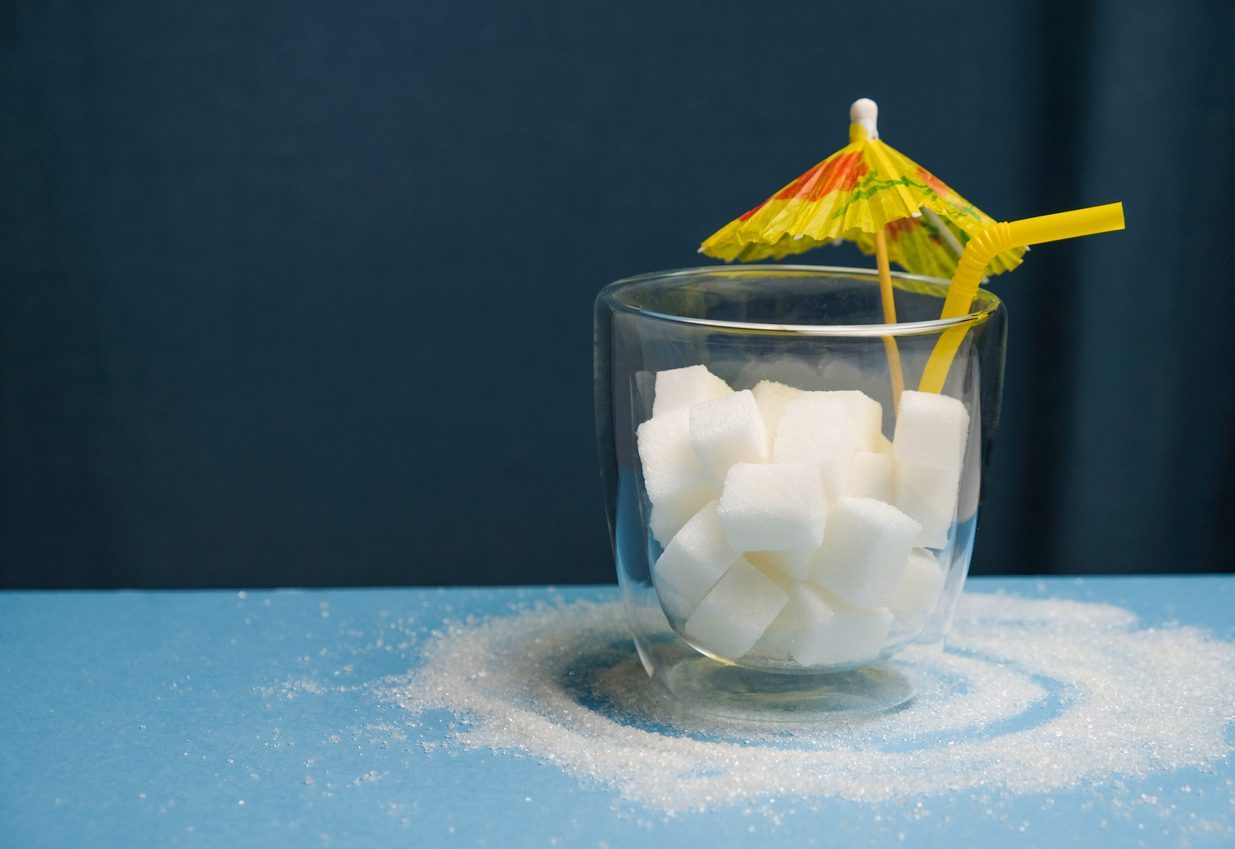;Resize,width=742;)
Every cocktail needs its own sweetener to achieve the right balance. Sugar is mainly used to improve the consistency of the drink, to help it better express its "tactile sensation", that set of "physical" sensations perceived by our mouth. Sugar is an excellent thickener, improves the texture of a drink and modifies its taste, sweetening as necessary. Let's always remember that the best possible cocktail is always balanced: neither sweet nor bitter, neither acidic nor savory and so on. Every drink has its own perfect sweetener which is not always the "classic" sugar, i.e. sucrose, even if it is predominant in mixology. Let's see the main sweeteners used in bars around the world: from raw sugar to white sugar to the healthier alternatives.
In the world of cocktails, as we have said, different types of more or less natural sugars are used. Let's discover them in detail.
Sucrose
Sucrose is without a doubt the most widely used sweetener in the world. There are so many different types of sucrose and so many ways to get the best balance in a cocktail using sucrose.
1. White Sugar

Let's start with the simplest and most famous type of sucrose on the market: white sugar. It is the classic sweetener extracted from sugar cane or sugar beet, it undergoes a refining process to remove any residue of molasses and is white thanks to the addition of vegetable carbon and sulfuric acid. It gives almost exclusively sweetness to preparations and the best way to use it is to transform it into a syrup. Very simple to make, it can then be used in countless types of cocktails such as the Daiquiri, Gin Fizz, Whisky Sour. Many people think that cane sugar should be used for the Mojito but in reality this is a mistake: white sugar guarantees better solubility and sweetens the acidity of the lime. Raw cane sugar takes away freshness from the cocktail.
2. Raw Sugars: Cane, Beetroot, Whole
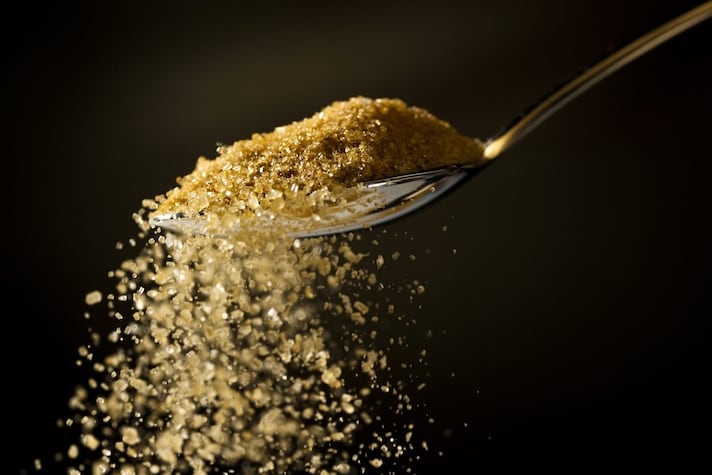
White sugar is obtained from raw sugar, obtained from sugar beet or sugar cane through a purification process. In the cane sugar that we also find in bars and that we use for coffee, the color is given by the molasses residues present on the crystals. Molasses is responsible for the brown color of sucrose but, in addition to the pigmentation, it also has residues of iron, potassium and calcium that are absent in the white one. It is considered by many to be a "healthy" alternative to refined sugar and yet, if you look closely, cane sugar may not be so different from common granulated sugar. The use of cane sugar in mixology allows bartenders to exploit the aftertaste of licorice and spices naturally contained in this type of product. Also in this case the best way to use this sugar is to create a syrup, possibly choosing a raw material with very small, irregular grains and an intense flavor. Beet sugar is not used very often because it has hints of caramel that not everyone likes.
Among the most famous raw sugars is demerara, obtained by pressing sugar cane, a product that undergoes less processing than its "colleagues". Its name comes from the homonymous region of Guyana, the main producer of this raw material in the past: today, however, it is obtained from white sugar to which a portion of molasses is added. Its flavor is very strong, it has a very fine grain and is more golden than cane sugar. It is the best sweetener on the market for tikis, those cocktails inspired by the world of Polynesian culture and deities such as Mai Tai or Zombie. Muscovado is also very famous among raw sugars: in this case we are faced with a centrifuged and refined raw cane sugar. It has a complex, almost sweet and sour flavor, and the grain is very fine, ideal for Daiquiri. Very similar is panela, a sugar obtained by pressing sugar cane and pouring into small molds. It is difficult to find in Europe but is very popular in Latin America. It also has an Asian version, the Indian panela or jaggery, obtained from sugar cane and date palms, coconuts and cycads. The last of the whole sugars is turbinado but even in this case it is not easy to find in Europe but is very popular here in the United States, it is obtained by adding a small quantity of molasses to refined sugar. It is very light and tends to be caramelized, it is the basic sugar of all the home-baked desserts prepared in the USA.
3. Sugar Syrup
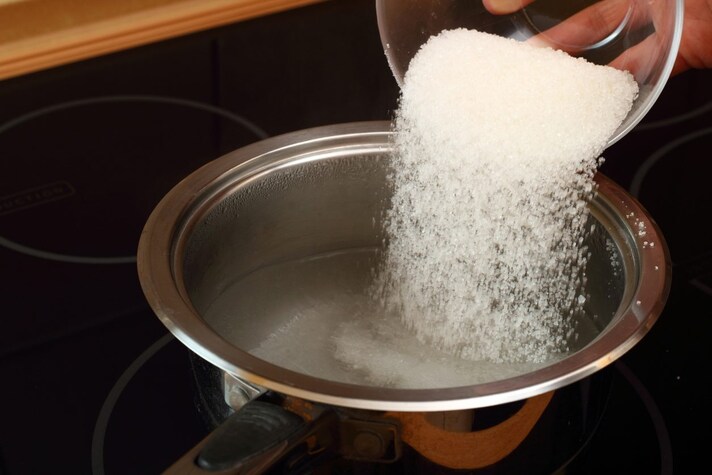
We said that very often it is better to use sugar syrup, because it is easier to mix in a drink. It is a very popular sweetener in many bars for this very reason. There are many syrups on the market but we can also make it ourselves, at home. To obtain 200 ml, 100 g of water and 165 g of sugar are enough. Precision is very important because once the threshold of 66.7% sugar in water is exceeded, the syrup becomes saturated, that is, it settles on the bottom without dissolving because the quantity of water and sucrose is in balance. If you overdo it, don't worry, just add a little warm water and mix everything with a spoon. Once done, let it cool and then pour into a clean, dry container before storing in the refrigerator. You can also try mixing the sugars to obtain a more complex and pleasant syrup. Try with 35g of moscovado, 50g of brown sugar, 250g of white sugar and 400g of water.
Fructose
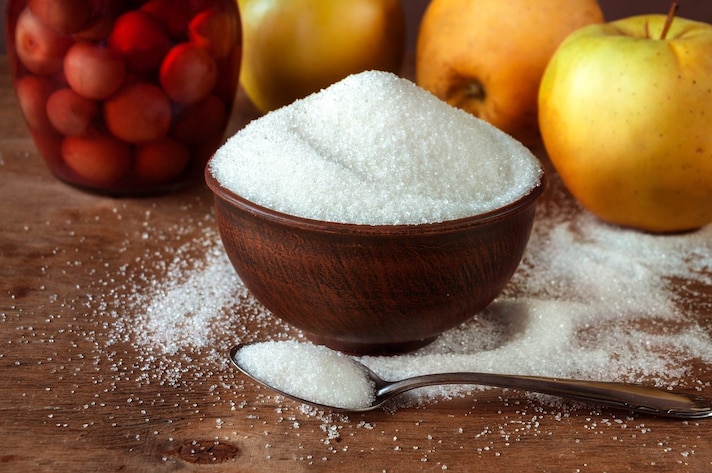
Fructose is a natural sugar contained in honey, jams, fresh fruit, we also find it in many vegetables and it is the "sweet" part of flour, consequently of pasta, bread and pizza. Fructose is usually extracted from corn and is crystalline. You have to be careful with this product because it has a sweetening power 40 times stronger than sucrose. Precisely for this reason it is the favorite product of beverage, ice cream and confectionery companies. If you want to use it in drinks you have to be very careful, there is the risk of breaking that much sought-after balance.
Glucose or Dextrose
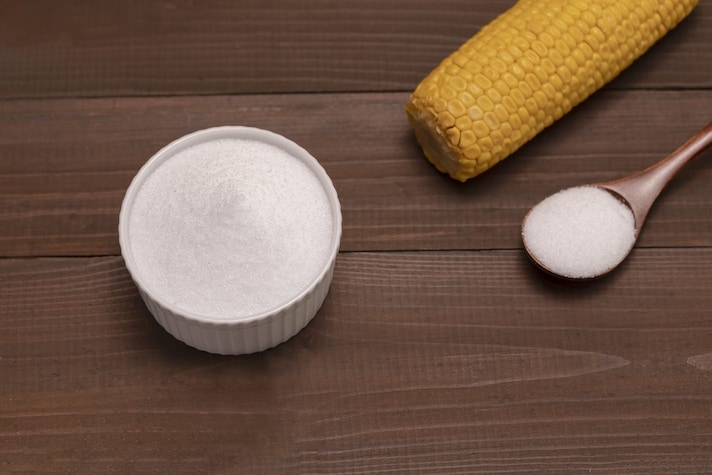
Glucose is the main energy source for our cells and many other organisms, whether complex (like mammals) or simple, like many bacteria. It is also one of the best simple sugars to use in mixology. It is obtained industrially from the total hydrolysis of starch, which can be corn or potato starch. It is a white crystalline powder, similar to white sugar but much finer and less sweet. It is difficult to use but managing to dose this sweetener well can give great power: just a pinch of glucose on the tongue is enough to provoke a sensation of freshness and prepare the palate for a better perception of aromas. Precisely because of this characteristic, we suggest you replace it with sugar syrup in the Pisco sour, so as to release all the typical aromas of the South American drink and in the Paloma with that pleasant mix of sweetness and savoriness.
Xylitol
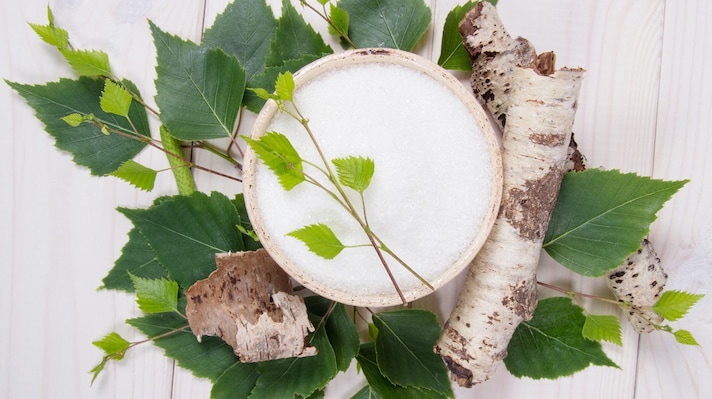
We learned about this word thanks to advertising: many chewing gums use it as a substitute for sugar because it has a sweet taste but, unlike "classic" sugar, once in the mouth it is not converted into acids that promote the formation of tooth decay and reduces the bacterial fauna of the mouth. It is not a simple sugar but a 5-carbon polyol. We can find it in some vegetables but in reality it also forms naturally in our body during the metabolism of glucose. It is not a widely used sweetener but there are those who use it. We do not recommend this product in any champagne– based cocktails or those with fermented products because xylitol inhibits the activity of yeasts. There are no classic xylitol-based cocktails but try adding it to the Screwdriver to tone down the pungency of vodka, or replace the sugar syrup with xylitol in the Long Island Iced Tea to counteract the mix of strong spirits present in the drink.
Honey
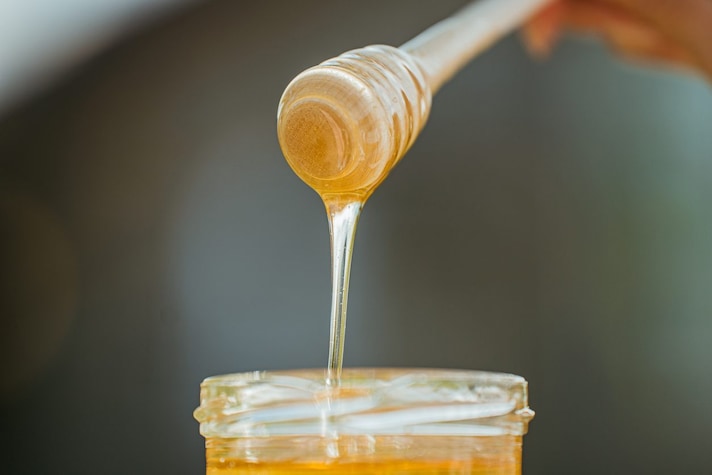
It is totally natural, never expires, highly energetic and easily digestible. Composed mainly of fructose, glucose and sucrose (a fusion of three sweeteners we have talked about), it has many mineral salts and vitamins as well as containing the active ingredients of the plants from which bees extract nourishment. It is a "living" and revitalizing sweetener: it contains enzymes and antibiotic substances. Honey has always been linked to the world of alcoholic beverages: one of the first spicy products created by man is mead, an alcoholic beverage produced by the fermentation of honey already known at the time of the Egyptians.
However, this sweetener presents a big problem in mixing: crystallization due to the presence of glucose, influenced by temperature and humidity of the air. Bars that want to use this wonderful product must always keep it below 50°F/10°C or above 77°F/25°C in a dry place, so as to slow down the crystallization phenomenon. If the honey hardens you can heat it to 113°F/45°C but the whole sense of the sweetener is lost: at this temperature it becomes liquid again but the enzymes, vitamins, all the "living" substances are irreparably damaged. Many bars use a pasteurized liquid honey to get rid of a problem: the problem is that by pasteurizing it, the honey loses all types of benefits and turns into a common simple sugar. You might as well use white sugar at this point. But where do we use honey? Penicillin is certainly the most famous classic ever with a honey syrup, with it also the Golden milk, a truly exquisite typical Indian non-alcoholic drink; you can also use it as a sweetener in a Capirinha instead of cane sugar or by replacing the sugar syrup with a honey syrup in a Bramble.
Stevia

All Breaking Bad fans associate this sweetener with the character of Lydia Rodarte-Quayle, one of the "baddest" of the series: a sneaky and manipulative sociopath who puts nothing but stevia in her herbal tea. Stevia is a small shrub native to South America, between Brazil and Paraguay, which the natives call "ka ‘ha ‘e", or "honey grass". The name is not accidental: stevia is rich in sweet components, very sweet, up to 300 times sweeter than sucrose. Stevia glycosides are stable to heat and pH, do not ferment and do not caramelize during cooking, have good solubility in both alcohol and water. It also has many positive properties: it contains manganese, cobalt, iron, carbohydrates, proteins, vitamins, minerals and has no caffeine. In mixology as in cooking we can use it in the same way as a common sucrose but watch out for the sweetness. We recommend using stevia in Blue Lagoon and Southside, being very careful with the quantities: use 1/4 of the dose compared to sugar.
Agave Syrup
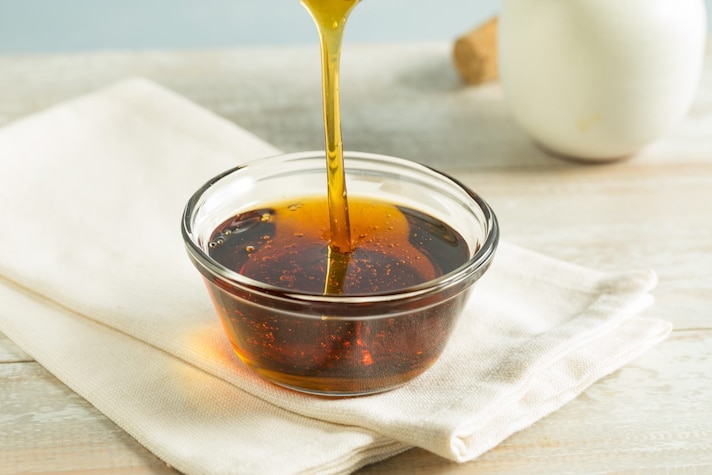
Agave syrup is extracted from the agave plant, the one that gives us tequila and mezcal. It is mostly composed of fructose and glucose and has a consistency similar to honey. However, agave has a greater sweetening power than sugar and honey itself, for this reason it should be used in smaller quantities. Among the most appreciated elements in favor of agave is the glycemic index, three times lower than sucrose and has a lower caloric intake with about 300 kcal per 100 g compared to the 392 kcal of white sugar. It dissolves very quickly both in alcohol and in water and has a strong caramel flavor. It has a slightly higher price than other products encountered so far, also due to the costs of importing the product. It is ideal for toning down and giving a different texture to large agave-based cocktails such as the Margarita and the Tequila Sunrise.
;Resize,width=767;)
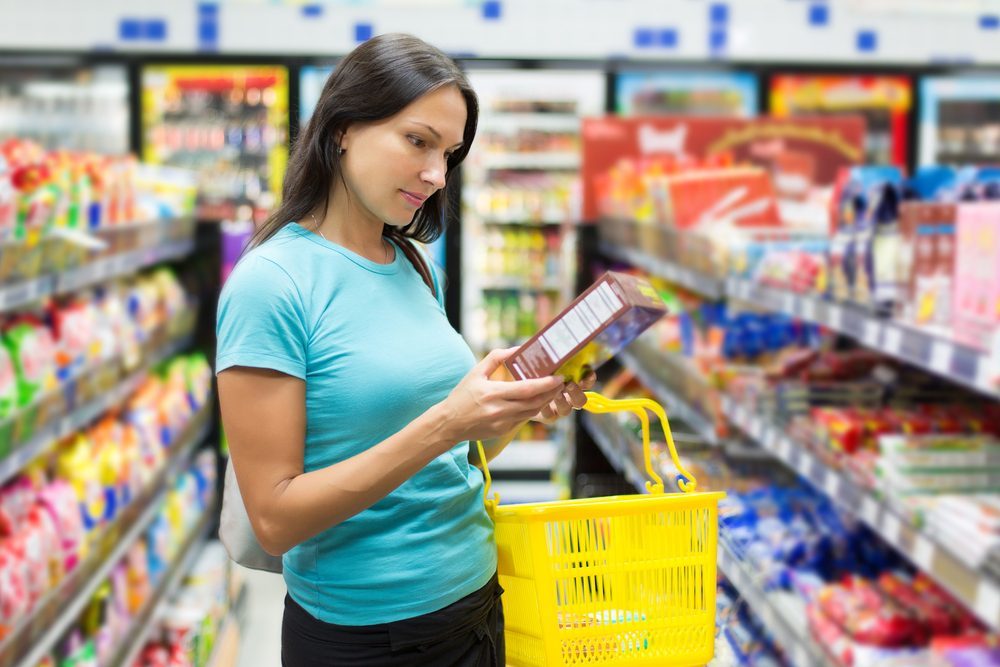;Resize,width=712;)

;Resize,width=712;)
